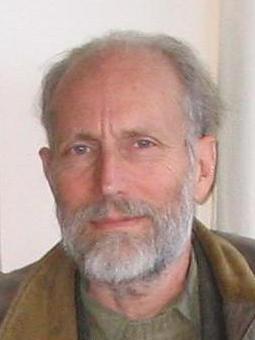The “Hard Steps” model describes the emergence of “human-like intelligence” on Earth as being the product of one or more extremely unlikely events in the evolutionary history of life on Earth. It’s famous, and gave rise to the “Great Filter” hypothesis as a solution to the Fermi Paradox—but is it right?
The model starts with Brandon Carter, a physicist who mused why it is that humans arrived right in the middle of the Sun’s main sequence lifetime. Surely, he reasoned, if species like humans were common in the universe they’d arise quite quickly in a habitable planet’s history, not halfway through it. What is to account for the coincidence that humans arose 4.5 billion years after the sun formed, and this halfway through its main sequence lifetime?

Brandon Carter
He considered 3 possibilities for how long it takes human-like species to evolve: they typically take a time much much less than 10 billion years (the lifetime of the Sun), or about 10 billion years, or much longer than 10 billion years.
The first option makes no sense: Earth should have had humans billions of years ago. The second option is a bizarre coincidence: why should human evolution just happen to take around 5 billion years, and not 5 million years or 5 quadrillion years? Seems unlikely.
The third option seems wrong at first glance: if the hypothesis is that humans take trillions of years to form but we formed in only billions, surely the evidence contradicts that? But the anthropic principle explains it: human-like intelligences will occasionally, rarely, arise exceptionally early in some very lucky systems, and those are the only places they’ll be found in a universe “only” 14 billion years old.
In other words, if it takes trillions or more years for a human-like intelligence to form on average, then in the 200 billion stars in the Galaxy, the only places we’ll find them are the amazingly lucky stars where they formed comparatively early—which is most likely about halfway through their lives.
This is a really elegant and persuasive argument! It definitely appeals to the physicist in me, and it’s been very influential.
Since Carter’s argument we’ve come to understand that we formed rather late in the Earth’s habitable history—the sun will grow in luminosity and boil off the Earth’s oceans in “only” 1 billion years or so. This has led to the argument that there might have been not just one but perhaps 5 or more “hard steps” that are all very unlikely, and we arrived “late” in the Earth’s habitable history because Earth is the extraordinarily rare—perhaps unique— planet that managed to accomplish all of them before becoming uninhabitable.
This model led to many authors, including physicist (and crackpot) Frank Tipler and economist Robin Hanson to embrace this framework and try to identify the “hard steps.” Common suggestions include abiogenesis (the origin of life), photosynthesis, the evolution of eukaryotes (which a certain sort of cellular complexity), and the evolution of animals as examples of potential “hard steps”.
Each of these things is associated with an “evolutionary singularity”—something that seems to have only happened once in the history of life on Earth. Singularities are contrasted with convergent traits like eyes—things that are so useful evolution seems to figure out a way to invent them over and over again. By contrast, a singularity is an event that produces a trait that only evolves once—all species that have the trait inherited that trait from a single, common ancestor. Such singularities might represent extremely unlikely evolutionary innovations that were so useful they spread widely, but so unlikely they never evolved again, despite their utility. Evolutionary singularities are great candidates for “hard steps”!
Robin Hanson is a particular advocate for this model, and proposed a “solution” to the Fermi Paradox (why no aliens are on Earth today) called the “Great Filter.” In this model there is one “hardest step” between lifeless planets and a species that colonizes every planet in a galaxy. It might be “behind us”—abiogenesis or one of the other “hard steps”—or it might be “in front of us”—an alien species that eradicates any species that develops spaceflight, maybe.
Both the Hard Steps model and the Great Filter model have great popular salience and widespread traction in the SETI literature, but, oddly enough, not in evolutionary biology where, one would think, it would be particularly useful if it had merit. How odd! Or, as Dan Mills put it in a recent paper:
Curiously, while these issues concern the evolutionary history of Earth’s biosphere, comparatively few Earth historians and evolutionary biologists have responded to Carter’s arguments in the literature, having left astrophysicists, economists, and futurists to champion the hard-steps model unchecked. Given this situation, could it be that the hard-steps model has only endured for as long as it has because the fields best suited to falsify it have been historically unengaged?
Dan is an affiliate member of the PSETI Center (and PSU alum!) and he led a paper, cheered on by Adam Frank, Jenn Macalady, and me, to examine these issues. It’s been a lot of fun looking into this with a critical eye from someone with actual expertise in evolutionary biology.
Next time: What an actual geomicrobiologist thinks about the hard steps reasoning
